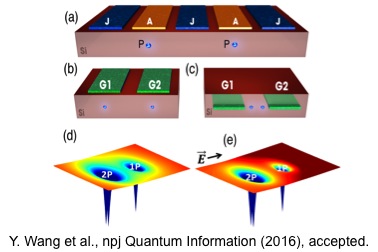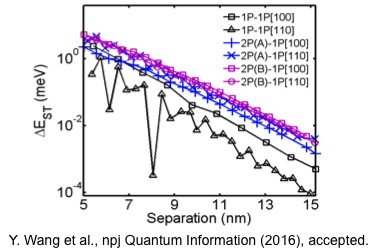Detuning gates are less challenging in fabrication
|
PROBLEM:
OBJECTIVE:
APPROACH:
RESULTS/IMPACT:
|

|
2P-1P systems are less prone to fabrication error
|
PROBLEM:
OBJECTIVE:
APPROACH:
RESULTS/IMPACT:
|

|
Exchange can be tuned by 5 orders of magnitude in a 2P-1P system
|
PROBLEM:
OBJECTIVE:
APPROACH:
RESULTS/IMPACT:
|

|
